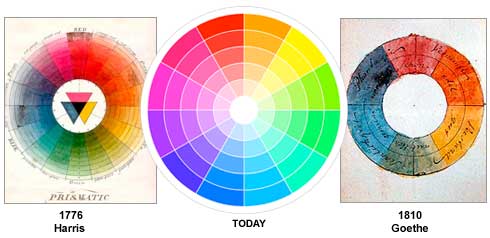The Colour Wheel
A colour circle, based on red, yellow and blue, is traditional in the field of art. Sir Isaac Newton developed the first circular diagram of colors in 1666. Since then, scientists and artists have studied and designed numerous variations of this concept.
Colour Wheel Categories
Primary Colors: Red, yellow and blue
In traditional colour theory (used in paint and pigments), primary colours are the 3 pigment colours that can not be mixed or formed by any combination of other colours. All other colours are derived from these 3 hues.
In traditional colour theory (used in paint and pigments), primary colours are the 3 pigment colours that can not be mixed or formed by any combination of other colours. All other colours are derived from these 3 hues.
Secondary Colors: Green, orange and purple
These are the colors formed by mixing the primary colours.
Tertiary Colors: Yellow-orange, red-orange, red-purple, blue-purple, blue-green & yellow-green
These are the colours formed by mixing a primary and a secondary colour. That's why the hue is a two word name, such as blue-green, red-violet, and yellow-orange.
These are the colors formed by mixing the primary colours.
Tertiary Colors: Yellow-orange, red-orange, red-purple, blue-purple, blue-green & yellow-green
These are the colours formed by mixing a primary and a secondary colour. That's why the hue is a two word name, such as blue-green, red-violet, and yellow-orange.
Colour Context
How colour behaves in relation to other colours and shapes is a complex area of colour theory. Compare the contrast effects of different colour backgrounds for the same red square.
Red appears more brilliant against a black background and somewhat duller against the white background. In contrast with orange, the red appears lifeless; in contrast with blue-green, it exhibits brilliance. Notice that the red square appears larger on black than on other background colours.
(source)




No comments:
Post a Comment